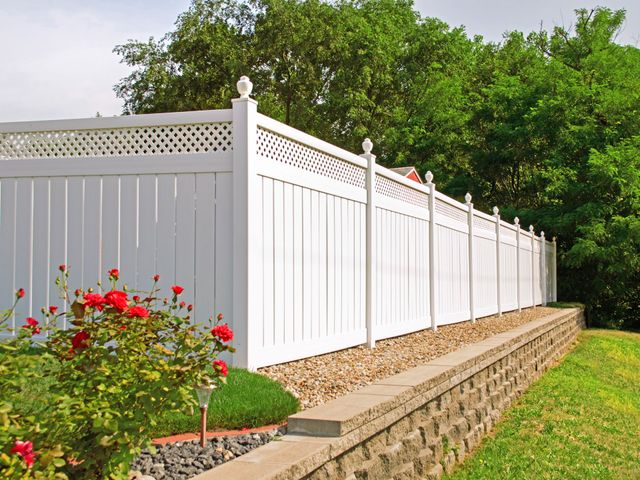[ad_1]
Dive Transient:
- They say what goes up, have to arrive down. But construction substance pricing has been testing that inevitability for in excess of two decades, with no discernable finish in sight.
- Economist Ken Simonson issued nonetheless a further building inflation warn past week, spotlighting the inexorable climb of diesel, aluminum mill styles, copper and plastic development products and solutions.
- “This period is exclusive in how wide-based cost boosts are,” said Simonson, main economist for the Affiliated General Contractors of The usa, in an job interview. “Previously, we’ve observed just a constrained variety of merchandise soaring in rate. This time, it is really a lot much more considerable in the quantity and magnitude, very long lead situations, sudden shortages and items not exhibiting up in the quantities or instances envisioned.”
Dive Perception:
The news provides to all round inflation woes, as the Purchaser Price tag Index jumped 8.5% in March, its optimum spike since 1981. The AGC’s design alert was the seventh pricing alarm Simonson has sounded due to the fact March 2021. Before that, his employer hadn’t set out a similar warning given that 2008, at the peak of the Excellent Recession, and never with this sort of an accelerated cadence.

Ken Simonson
Courtesy of Affiliated Normal Contractors of The usa
Barry Wurzel, president and founder of industrial contractor Wurzel Builders in Austin, Texas, has noticed these impacts first hand.
“Suppliers are frequently repricing, and they’ll only hold their charges for 24 several hours,” Wurzel mentioned. “Entrepreneurs have not embraced the adjust of pace nevertheless, so it places a strain on the marriage with general contractors.”
Chief amongst the culprits in the most current report was the value of diesel. It was up 33% in five months, leading to an all-time high of $5.25 per gallon on March 14. That added to the 237% leap that had already transpired among April 2020, at the starting of the COVID-19 pandemic, and February 2022.
Now, these price tag surges are currently being felt from the basements of skyscrapers all the way up to their best flooring. Large diesel-guzzling diggers claw away dirt for their foundations, right before tremendous, diesel-belching tower cranes hoist their steel beams in area. It also provides price to every item in involving.
“Gasoline surcharges are popular now, and there is typically a different line for shipping charges that are altered according to the modify in cost,” Simonson claimed. For illustration, a 10 cent raise per gallon per week might final result in a 2% increase in delivery service fees, he stated.
Other standouts provided steel mill merchandise, up 113% amongst April 2020 and February 2022, lumber and plywood (+101%), copper and brass mill designs (+52%), plastic building products (+45%) and gypsum or drywall (+29%).
Expense-bid gap
Simonson emphasized that cyclicity dictates charges need to sooner or later decline. But at what level is an fully different debate.
For case in point, even though all round construction fees have been raising fast, increasing 22% year-over-yr by February, contractors’ bid selling prices have not risen as quick. They were being only up 17% during the identical timeframe.
The past two situations that occurred — during the Wonderful Economic downturn, and from Oct 2016 to November 2018 — the gap amongst content expenditures and bid rates failed to shut for 26 and 25 months, respectively.
The present pricing-bid gap began in December 2020, or 15 months ago. That indicates contractors could have to have to stomach this atmosphere for at minimum an additional 10 months, but it could also be a lot for a longer time, and in all probability effectively into 2023.
“I would like my crystal ball were being obvious more than enough to forecast when this would be in excess of, but if I’ve discovered just about anything from this time period, it really is that there usually appears to be to be some thing on the horizon that keeps us from getting again to so-identified as typical,” Simonson said.
He cited the freak winter ice storm in Texas in 2021 killing resin production potential, the culprit for substantial plastic prices wildfires in British Columbia and soaking rainstorms in the Southeast hampering lumber mill capability and the Ever Presented container ship blocking the Suez Canal exacerbating an already frayed international source chain.
A housing offramp?
Include to that growing curiosity costs, blended with skyrocketing housing selling prices in the past two yrs, and Simonson sees lead to for problem. The purpose why is because supply is only just one facet of the source-demand equation. If need need to fall unexpectedly, that could spell even extra hassle for components of the design industry.
“The spot that is in all probability most at possibility at the instant is residential,” Simonson reported. “We’ve found particularly swift will increase in 30-calendar year-fixed property finance loan premiums as effectively as dwelling charges by themselves. That implies this substantial raise in demand from customers for one family households in certain is heading to diminish at some place, and probably incredibly abruptly.”
30-12 months fastened property finance loan premiums jumped from 3% in August 2021 to 4.95% the very first 7 days in April, the sharpest climb in 3 many years, in accordance to Bankrate.com. A 50 %-percent improve in house loan prices would translate into a $131 better month to month payment on a $300,000 property finance loan, according to CNBC, or practically $50,000 much more about the life of the mortgage.
If the housing marketplace slows, that could gain nonresidential contractors, who nonetheless haven’t caught up in the quantity of work opportunities in the sector since the beginning of the pandemic. But it could also have a contagious influence.
“Persons could pull back again to the extent that corporations say, ‘Maybe I never require to make one more dwelling enhancement shop. It’s possible I don’t require a new warehouse to serve this new subdivision,'” Simonson said. “So we could finally commence to see cooling off in need for some other classes of development.”
But even though Simonson ticked off the headwinds dogging the building sector, he said he wasn’t as pessimistic as other economists who have been predicting a recession in advance.
“It really is unavoidable at some point that demand is likely to awesome off, but at the instant, I nonetheless assume it really is comprehensive pace in advance,” Simonson stated. “When I see the powerful affliction of state and regional governments in terms of their budgets, company equilibrium sheets, family balance sheets, all of these points propose that there is still plenty of getting electricity. And presumably, some of that is heading to translate into ongoing desire for construction.”
[ad_2]
Resource backlink






